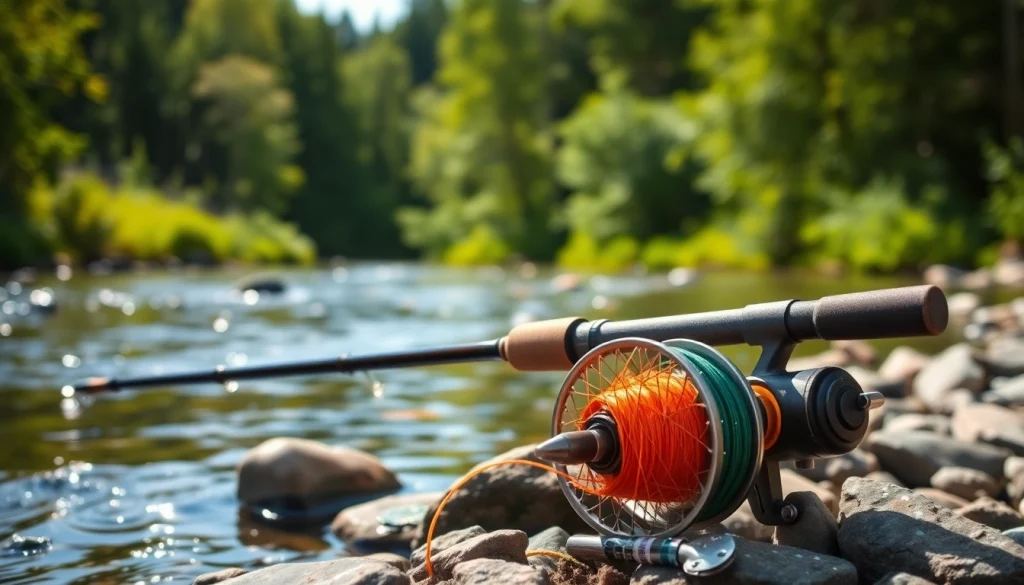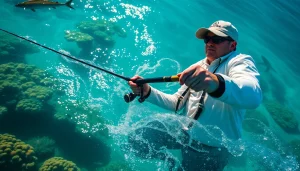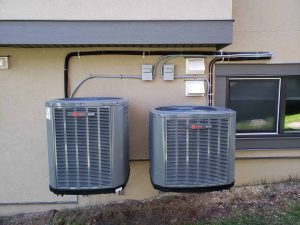Choosing the Right Fly Fishing Combo: Essential Tips and Key Features

Understanding the Basics of Fly Fishing Combos
What is a Fly Fishing Combo?
A fly fishing combo is a complete set of gear designed specifically for the sport of fly fishing, which includes a fly rod, reel, and fly line. These combos are often sold together to ensure compatibility and ease of use, particularly for beginners who are looking to start fly fishing without the hassle of piecing together individual components. The primary goal of a fly fishing combo is to provide everything an angler needs to get started in one convenient package, allowing for a quick entry point into the world of fly fishing.
The Components of a Fly Fishing Combo
A standard fly fishing combo typically consists of three main components:
- Fly Rod: The fly rod is specifically designed to handle light lures known as flies. These rods are usually longer and more flexible than traditional rods, allowing for the precise casting needed in fly fishing.
- Fly Reel: The fly reel is used to store the fly line and is crucial for controlling a caught fish. Unlike conventional reels, fly reels have a simple drag system that helps manage the tension on line as the fish pulls away.
- Fly Line: The fly line is heavier than standard fishing line, allowing the angler to cast the lightweight flies with greater accuracy and distance. It is available in various types for different fishing conditions and styles.
Why Choose a Fly Fishing Combo?
Choosing a fly fishing combo comes with several benefits. Firstly, it eliminates the guesswork involved in selecting compatible components, especially for beginners who may not know the intricacies of matching rods, reels, and lines. Additionally, combos are often more cost-effective than purchasing individual components. Finally, a well-selected combo takes into account the balance and compatibility of parts, resulting in optimized performance which enhances the overall fishing experience, particularly for novice anglers. For those looking to purchase their first fly fishing combo, it’s a straightforward solution that provides everything needed to hit the water confidently.
Key Features to Look for in a Fly Fishing Combo
Material and Durability
When selecting a fly fishing combo, the materials used in the construction of the rod and reel are paramount. High-quality graphite or composite materials often characterize dependable fly rods, offering a good balance of strength, sensitivity, and lightweight functionality. Durability is also a key consideration, as fly fishing often exposes gear to harsh environmental conditions such as saltwater, freshwater, and varying weather scenarios. Opting for corrosion-resistant reels and rugged rod designs will ensure prolonged use and reliability.
Weight and Balance Considerations
The weight and balance of the fly fishing combo greatly impact casting performance and ease of use. A well-balanced combo should feel comfortable in hand and allow for smooth casting motions without undue fatigue. Beginners should look for a combo with a lower overall weight to enhance maneuverability. As an angler gains experience, they might choose slightly heavier rods that cater to specific fishing styles or conditions.
Size and Length Specifications
Size and length specifications are crucial in determining the effectiveness of a fly fishing combo. Fly rods generally come in lengths ranging from 7 to 10 feet, and the choice largely depends on the types of fishing you’ll be doing. For example, a shorter rod is more precise on small streams, while longer rods are better suited for larger bodies of water. Additionally, line weights usually range from 1 to 12, defining the strength of the line and, consequently, the size of the fish that can be targeted. Understanding the appropriate size and length for your preferred fishing environments is essential for maximizing casting efficiency.
Best Practices for Using a Fly Fishing Combo
Setting Up Your Fly Fishing Combo
Setting up your fly fishing combo requires attention to detail to ensure the gear is ready for action. Start by attaching the reel to the rod, which usually involves sliding the reel foot into the appropriate seat and tightening it. Next, thread the fly line through the rod guides, beginning with the tip and working your way down. Ensure that the line is not twisted, as this can impede casting and affect performance. Lastly, tie a fly to the end of the line; this involves selecting a fly suitable for your target species, threading the line through the fly’s eye, and securing it with appropriate knots.
Basic Casting Techniques
Mastering basic casting techniques is essential for effective fly fishing. The two fundamental casts are the overhead cast and the roll cast. To perform an overhead cast, raise the rod tip and move it backward to create tension on the line before smoothly moving the rod forward and releasing the line at the right moment. Practice is key to achieving the correct timing and trajectory. The roll cast is helpful in situations where a backcast is not possible due to obstacles behind you; it involves using a flicking motion to propel the line forward without a traditional cast. Continuously refining these techniques can significantly enhance your fishing outcomes.
Maintaining Your Fly Fishing Combo
Regular maintenance of your fly fishing combo is crucial in prolonging its life and ensuring peak performance. After each fishing trip, rinse the rod and reel with freshwater to remove any salt or debris. Check for any visible signs of wear or damage, and replace any frayed lines or worn components as necessary. Store your combo in a cool, dry place with the line unwound to prevent twisting and deformation. By taking these simple maintenance steps, anglers can avoid performance issues and extend the durability of their equipment.
Common Challenges and Solutions with Fly Fishing Combos
Identifying Key Issues
Even with a quality fly fishing combo, anglers may encounter common challenges such as tangles, poor casting performance, or line breakage. Understanding these issues is the first step toward effective problem-solving. For example, tangled lines often arise from improper retrieval or casting techniques, while poor casting performance may be related to rod stiffness or casting technique. Identifying the specific problems helps in addressing the root cause efficiently.
Effective Troubleshooting Tips
When faced with challenges while using a fly fishing combo, implementing effective troubleshooting tips can make a substantial difference. If line tangling occurs, slow down your casting motion and ensure your line is properly lined up with the rod guides. For issues with line breakage, inspect the line for any knots or weak spots before rescuing it. Additionally, seeking feedback from experienced anglers or utilizing online resources can provide valuable insights into troubleshooting further.
Seeking Professional Advice
For those who find themselves consistently struggling with their fly fishing combos, seeking professional advice can be a game-changer. Many local fishing shops offer classes or workshops that introduce essential techniques and best practices. Alternatively, partnering with experienced fly fishing guides can provide personalized tips and advanced strategies, helping anglers improve their overall skills and confidence in the sport. Professional guidance is particularly beneficial for beginners eager to fast-track their learning curve.
Advanced Tips for Optimizing Your Fly Fishing Combo Experience
Adapting Techniques to Different Waters
Water environment plays a critical role in the effectiveness of a fly fishing combo. Each scenario, from fast-moving streams to serene lakes, requires different approaches. In fast water, consider using heavier flies and shorter casts to maintain control and precision. Conversely, when fishing in calm waters, you may opt for lighter flies and longer casts to match the slow-moving nature of the fish. Observing the water and adapting your techniques will maximize your chances of success.
Choosing the Right Flies for Your Combo
Selecting the appropriate flies is vital for matching your fly fishing combo to the specific fish you aim to catch. Flies can be categorized into three primary types: dry flies, nymphs, and streamers, each serving a unique purpose. Dry flies simulate insects on the water surface, nymphs represent juvenile forms of aquatic insects, and streamers imitate baitfish or other prey. Assessing the local fish diet and selecting flies that resemble it will significantly enhance your fishing success.
Upgrading Your Fly Fishing Combo Over Time
As you progress in your fly fishing skills, consider upgrading your combo to better fit your increased knowledge and experience. This may involve investing in higher-quality rods and reels that provide advanced features such as improved drag systems, heightened sensitivity, or specialized designs tailored to specific fishing conditions. Additionally, expanding your collection of fly lines and flies can further diversify your approach and adaptability, equipping you for various fishing scenarios. Carefully evaluating your progress and aspirations helps inform these upgrades accordingly.







